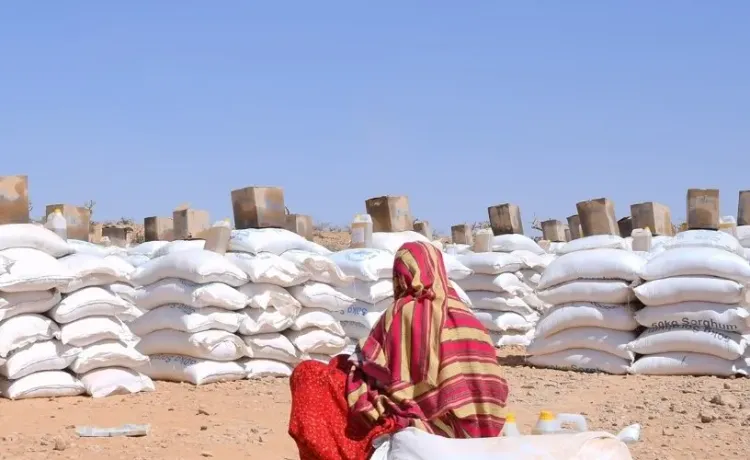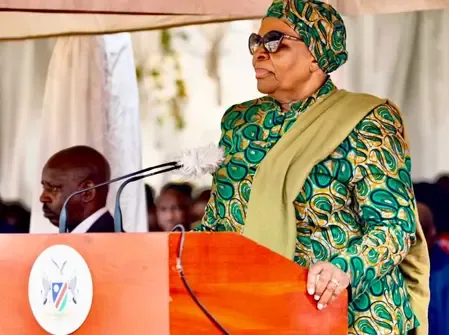Horn of Africa to Experience Above-Average Temperatures from March to May

Synopsis
Key Takeaways
- Warmer than usual temperatures expected in the Horn of Africa.
- Some regions may experience wetter conditions, while others will be drier.
- Climate change is contributing to food insecurity for 66.9 million people.
- EU funds $4.13 million for climate resilience projects.
- 23 million face severe hunger across Ethiopia, Kenya, and Somalia.
Nairobi, March 3 (NationPress) The Horn of Africa is projected to experience a warmer than normal climate from March through May, as reported by the Climate Prediction and Applications Center (ICPAC) of the Intergovernmental Authority on Development (IGAD), a regional organization.
The agency's latest forecast indicates that most of the region will witness above-average temperatures, with the exception of southeastern South Sudan and northeastern Uganda.
During this timeframe, temperatures may exceed 32 degrees Celsius in certain areas, while various regions—including western and southwestern Kenya, eastern Uganda, eastern South Sudan, western Ethiopia, and most of Tanzania—are expected to face wetter conditions than usual, according to ICPAC.
On the other hand, drier conditions are anticipated for many parts of Ethiopia, Somalia, Djibouti, Kenya, Rwanda, Burundi, western Uganda, and South Sudan, as reported by Xinhua news agency. The unusual weather patterns in the region are attributed to climate change, with the Horn of Africa identified as one of the most vulnerable areas.
According to the Food and Agriculture Organisation of the United Nations and IGAD, approximately 66.9 million people in the Horn of Africa are facing food insecurity, a figure likely to increase due to ongoing weather anomalies.
Last month, the World Food Programme (WFP) announced that the European Union has allocated $4.13 million to support a collaborative project aimed at safeguarding vulnerable communities in the Greater Horn of Africa from the harsh impacts of climate extremes, conflict, and displacement.
This initiative will assist 450,000 at-risk individuals in Ethiopia and Somalia over two years by mitigating the effects of predicted shocks before they escalate into crises, enhancing the capabilities of weather agencies to deliver timely, accurate forecasts, thus improving community and government responsiveness, as stated by the UN agency.
Rukia Yacoub, the WFP's Deputy Regional Director for Eastern Africa, remarked, “Increasingly frequent and intense climate extremes such as droughts and floods are compounding existing drivers of hunger such as conflict, displacement and economic instability.”
“As livestock and crops perish, livelihoods are lost, and hunger deepens,” the statement added. “Early action saves lives, builds people’s resilience to face future crises, and eases the strain on limited humanitarian resources.”
The project will be executed through collaboration among the WFP, the Food and Agriculture Organisation of the UN, the International Federation of the Red Cross and Red Crescent Societies, the Climate Prediction and Applications Centre of IGAD, and the Danish Refugee Council, as noted in the statement.
The Horn of Africa, situated in the easternmost part of Africa, stands as one of the globe’s most conflict-ridden and fragile regions. It has a long-standing history of protracted conflict, violent extremism, and weak governance, accommodating a substantial number of refugees and internally displaced individuals. Furthermore, it ranks as one of the poorest regions globally, with an estimated 57 million people living in extreme poverty.
The long-lasting effects of Covid-19, climate change, prolonged conflict, the war in Ukraine, and diminished global funding are all contributing factors to food insecurity in the Horn of Africa. The hunger crisis in this region is escalating to alarming levels, with 23 million individuals across Ethiopia, Kenya, and Somalia facing severe food insecurity and critical hunger and water shortages. Continuous drought and soaring food prices have undermined people's capacity to cultivate crops, rear livestock, and procure food for their families.









